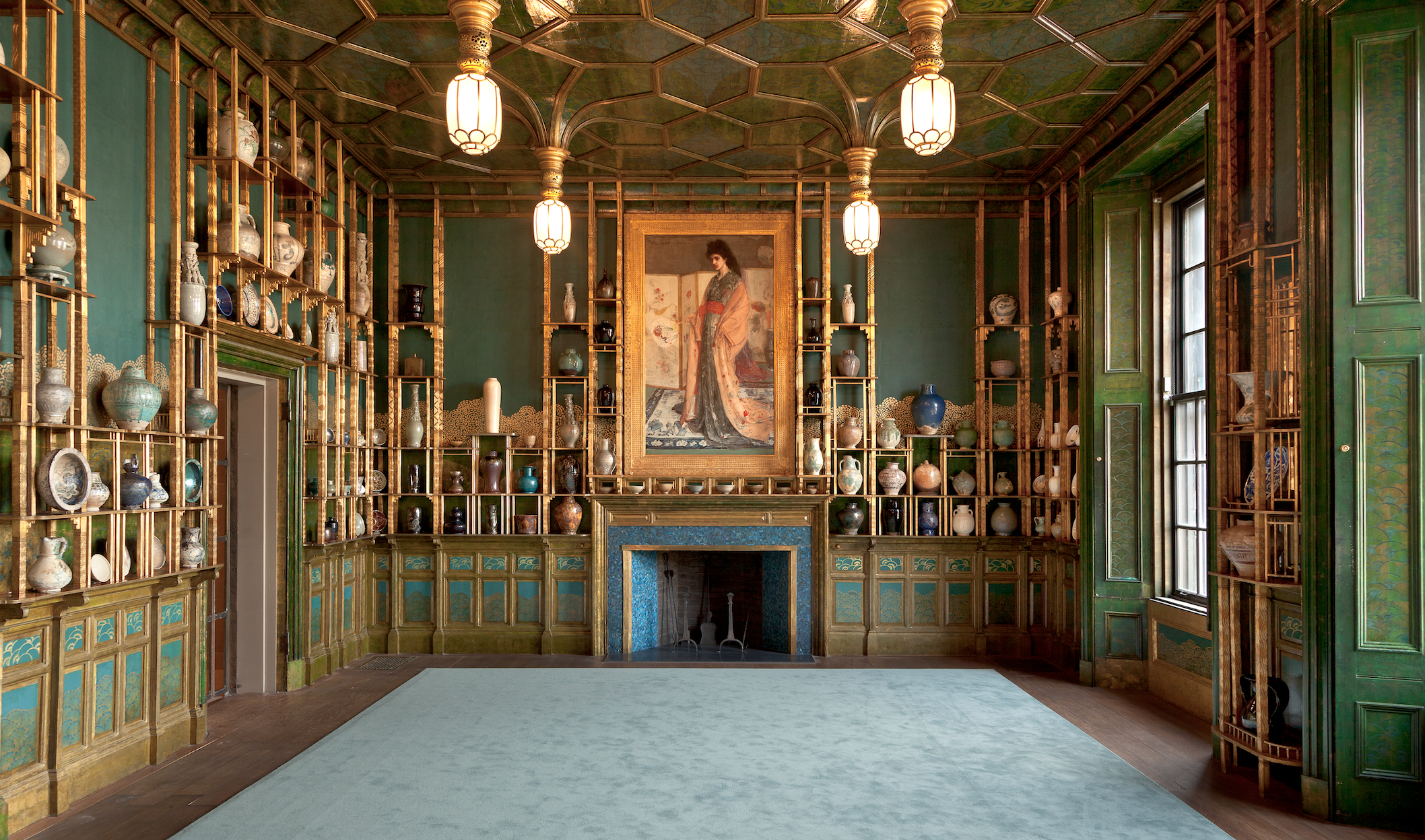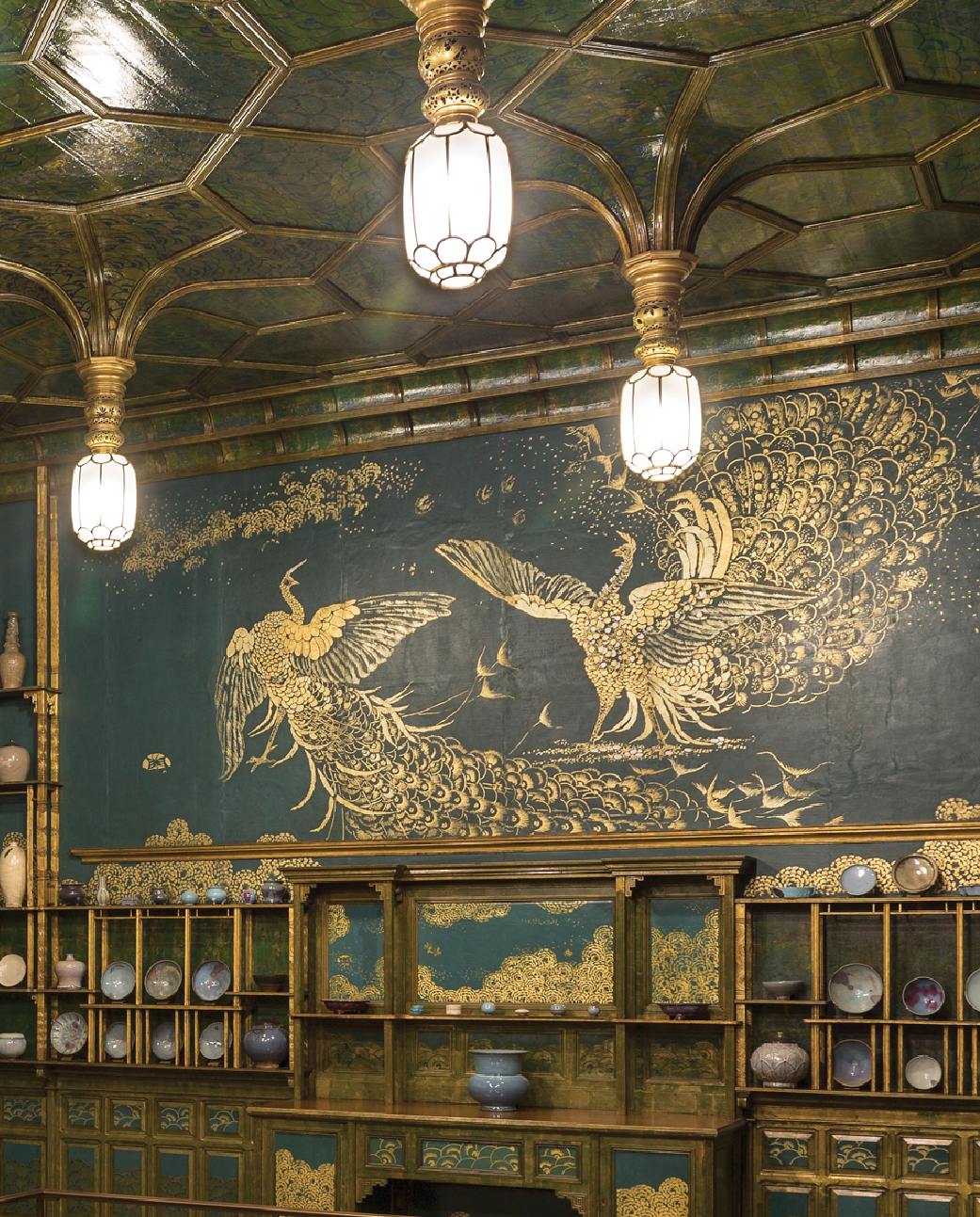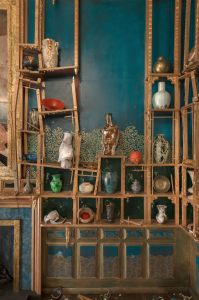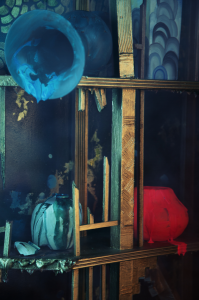- © 2025 Annapolis Home Magazine
- All Rights Reserved

By Robert Haywood
Rarely does an entire domestic interior find its way into a fine art museum. So why the Peacock Room, the lavishly designed dinning room conceived by the American expatriate artist James McNeil Whistler, now installed at the Smithsonian Institution’s Freer Gallery of Art? First, it is among the most extravagant Victorian interior design projects for a private home. Second, it expands upon the repertoire of the artist Whistler, the highly regarded nineteenth-century painter of moody landscapes and people. Third, the Peacock Room has a storied history that reveals much about an artist and his patrons.
The room was initially designed by architect Thomas Jeckyll for British shipping magnate Frederick Leyland as a showroom for his blue-and-white Chinese porcelain collection. Jeckyll designed the intricately carved shelving to hold the collection, leaving space above the fireplace to display Whistler’s great painting, Rose and Silver: The Princess from the Land of Porcelain.
 Jeckyll brought in Whistler as a color consultant, but Whistler’s imagination took off and he created a room he described as a “harmony in blue and gold,” inspired in part by the porcelains’ ornamental designs. With grand vision and ambition, Whistler, between 1876 and 1877, covered every inch of the room in his designs. Except for the greenish-blue walls, the surfaces glimmer with gold and copper leaf. The glorious golden peacocks, inspired by Japanese prints and vases, fill the shutters from floor to ceiling. As one historian notes, “Whistler imagined the Peacock Room as a painting on a grand scale and in three dimensions, a work of art that could be entered through a door.”
Jeckyll brought in Whistler as a color consultant, but Whistler’s imagination took off and he created a room he described as a “harmony in blue and gold,” inspired in part by the porcelains’ ornamental designs. With grand vision and ambition, Whistler, between 1876 and 1877, covered every inch of the room in his designs. Except for the greenish-blue walls, the surfaces glimmer with gold and copper leaf. The glorious golden peacocks, inspired by Japanese prints and vases, fill the shutters from floor to ceiling. As one historian notes, “Whistler imagined the Peacock Room as a painting on a grand scale and in three dimensions, a work of art that could be entered through a door.”
In a letter to homeowner Leyland, who was away during Whistler’s venture, the artist promised him a “gorgeous surprise” upon his return. While breathtaking to most visitors today, patron Leyland was far from happy with the room. Whistler had gone so far to paint over Leyland’s expensive gilt leather wall hangings. The artist and patron had a falling out with Leyland only paying half of the artist’s bill. Nevertheless, Whistler did have a chance to finish up and add a few more details. Art historians note that the two fighting peacocks on one of the far end walls are an allegory for Leyland’s and Whistler’s own stormy relationship.
After Leyland’s death, American businessman Charles Freer eventually purchased the room and had it disassembled and shipped to the United States, where in 1904 the room was reinstalled in Freer’s home in Detroit. Freer, who made a fortune manufacturing rail cars, devoted an enormous amount of his wealth and time to travel and collecting art. Once Freer reinstalled the room he lined the shelves with his own vases acquired from Egypt, Iran, Japan, China, and Korea, giving the room a worldly character while merging Eastern and Western aesthetics.
Following Freer’s death, the room acquired a third home when it was again disassembled and reinstalled at the Freer Gallery of Art, which Freer himself founded. The most recent installation of the Peacock Room is based on photographs taken in Freer’s Detroit residence. The room not only has the peacock as its subject matter, but also is an artistic tribute to the peacock’s grand strut and intricately designed feathers and luxurious colors.
Resources:
Linda Merrill, The Peacock Room: A Cultural Biography (1988)
Lee Glazer, The Peacock Room Comes to America (2012)
Opening May 16th, 2015
Arthur M. Sackler Gallery,
Smithsonian Institution, Washington, D.C.
 Peacock Room REMIX centers on Filthy Lucre, an immersive interior by painter Darren Waterston. Waterston reinterprets James McNeill Whistler’s Peacock Room as a resplendent ruin, an aesthetic space that is overburdened by its own excesses—of materials, history, and creativity.
Peacock Room REMIX centers on Filthy Lucre, an immersive interior by painter Darren Waterston. Waterston reinterprets James McNeill Whistler’s Peacock Room as a resplendent ruin, an aesthetic space that is overburdened by its own excesses—of materials, history, and creativity.
Waterston writes that he “set out to recreate Whistler’s fabled Peacock Room in a state of decadent demolition—a space collapsing in on itself, heavy with its own excess and tumultuous history. I imagined it as . . . a vision of both discord and beauty, the once-extravagant interior warped, ruptured.”
 Darren Waterston graduated in 1988 with a BFA from the Otis Art Institute in Los Angeles. Prior to that he studied at the Akademie der Künste and the Hochschule für Bildende Künste in Germany. Waterston has been exhibiting his paintings, works on paper, and installations in the United States and abroad since the early 1990s.
Darren Waterston graduated in 1988 with a BFA from the Otis Art Institute in Los Angeles. Prior to that he studied at the Akademie der Künste and the Hochschule für Bildende Künste in Germany. Waterston has been exhibiting his paintings, works on paper, and installations in the United States and abroad since the early 1990s.
For more information on this exhibition, which opens on May 16 and runs through December 2016, visit www.asia.si.edu.
While seeing Waterston’s reinterpretation of Whistler’s Peacock Room, you can also visit Whistler’s Peacock Room on permanent display at the Freer Gallery of Art which is connected to the Sackler.
From Vol. 6, No. 2 2015
Annapolis Home Magazine